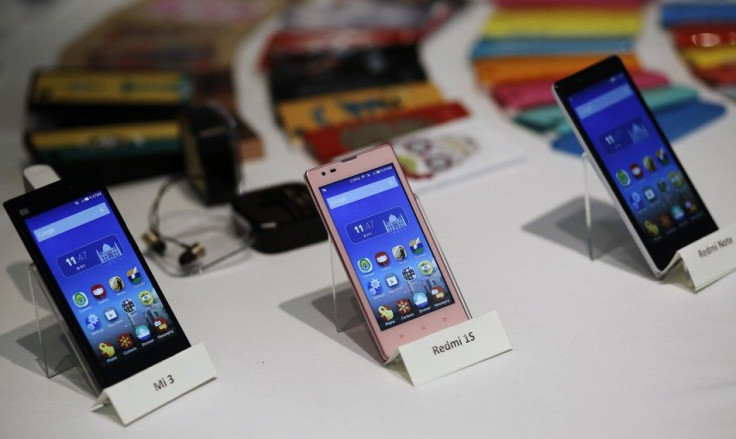HTC Desire 820 v. Xiaomi Mi4 – Specifications, Features And Price Showdown

The four-year-old Xiaomi has already established itself as one of the world's largest smartphone manufacturers. Of late, the company trumped Samsung and took the title of the biggest smartphone vendor in China when it comes to shipments. Notably, Xiaomi's 2014 flagship Mi4 was released in August and the device has been widely praised for its killer features at an affordable price. On the other hand, the brand new HTC Desire 820 with the latest 64-bit processor is expected to be released sometime in November. Readers who are interested in purchasing the Xiaomi Mi4 or the upcoming HTC Desire 820 should check out this comparison.
Display, Design And Size
HTC Desire 820 features a 5.5-inch LCD display and 720 x 1280 pixels resolution, while the Xiaomi Mi4 comes with a relatively smaller 5.0-inch IPS LCD display packed with 1,080 x 1,920 pixels resolution. The pixel densities of the Xiaomi and HTC handsets translate to 441 ppi and 267 ppi, respectively.
When it comes to design, the Xiaomi smartphone looks very much like Apple's iPhone, complete with the same stainless steel band encircling its sides. The white plastic fixers embossed on the metallic band are particularly iPhone-like. The device has a glossy plastic rear panel, but its metal band provides a premium look to the phone. Overall, the 2014 flagship looks stunning from the outside, CNet notes.
Moving on to the HTC Desire 820, the handset features a bold, bright and sleek design. The company has capitalised on the double-shot colour technology with the objective of getting the two-tone colour unibody. This colour technology improves the general look and the quality of the handset. Like other mid-range handsets, the Desire 820 smartphone is also built with polycarbonate material, notes HTC.
In terms of size, the thickness and weight of the upcoming HTC device are 0.30 inches and 155 g respectively, while the Mi4 is 0.35-inch thick and weighs 149 g. Therefore, the Xiaomi device is relatively lighter, whereas the HTC handset is quite thinner.
Hardware, Software And Memory
The Mi4 is powered by a quad-core (Qualcomm Snapdragon 801) Krait 400 processor, clocked at 2.5 GHz and backed by an impressive 3 GB of RAM. The HTC Desire 820, on the other hand, is powered by an octa-core (Qualcomm Snapdragon 615) SoC, clocked at a combination of four 1.5 GHz Cortex-A53 cores and four 1.0 GHz Cortex-A53 cores and a respectable 2 GB of RAM. Moreover, the Xiaomi phone runs on Android v4.4.3 KitKat OS with MIUI 5.0, while the HTC handset runs on Android v4.4.2 KitKat OS along with HTC Sense UI 6.0.
When it comes to memory, the Mi4 offers 16 GB and 64 GB of built-in storage, whereas the Desire 820 is equipped with 16 GB of storage. While the Xiaomi handset does not support expandable storage, the HTC device supports up to 128 GB.
Camera And Battery
Surprisingly, both devices have 13 MP primary camera unit and an 8 MP secondary shooter for capturing killer selfies. The difference, however, comes in the form of flash unit. While Xiaomi has gone for dual-LED flash, HTC settled for a single flash unit. Moving on to the battery configuration, the Mi4 is equipped with a powerful 3080 mAh unit, while the HTC handset houses a 2600 mAh battery unit.
Additional Features
1. The Desire 820 supports BoomSound, according to HTC's official blog. In addition, the device features BlinkFeed news aggregator and vertical app drawer.
2. While the Desire 820 uses nano-SIM, the Xiaomi Mi4 supports micro-SIM. Furthermore, the Mi4 has an Infrared port, whereas the Desire handset doesn't. However, none of the aforementioned devices support NFC. According to a report from GizChina, only 1 percent of global customers use NFC, thus Xiaomi dropped the NFC support in Mi4.
3. The Mi4 supports WCDMA at this point. However, LTE Xiaomi Mi4 has recently been unveiled in China for a price of 325 USD. Plus, a new variant is expected to be launched toward the end of 2014 with international LTE support. Meanwhile, the HTC Desire 820 supports 4G LTE.
Price
The HTC Desire 820 is reportedly priced at 330 euros that roughly translates to 413 USD and 478 AUD, says Digital Trends. The Xiaomi Mi4, on the other hand, can be purchased for 384.99 USD (or 446 AUD) in Oppomart.
Also Read
1. Nexus 9 Half-Price Sale Update: HTC Sold Several 100s Of Tablets, Future Flash-Sale Scheduled For Coming Weeks - [Read]
2. LG G3 vs. Motorola DROID Turbo: Specifications, Features And Price Showdown - [Read]
3. Moto 360 Heading To T-Mobile On Nov 12, While Verizon And AT&T Are Restocking; Two New Colours Hinted - [Read]





















